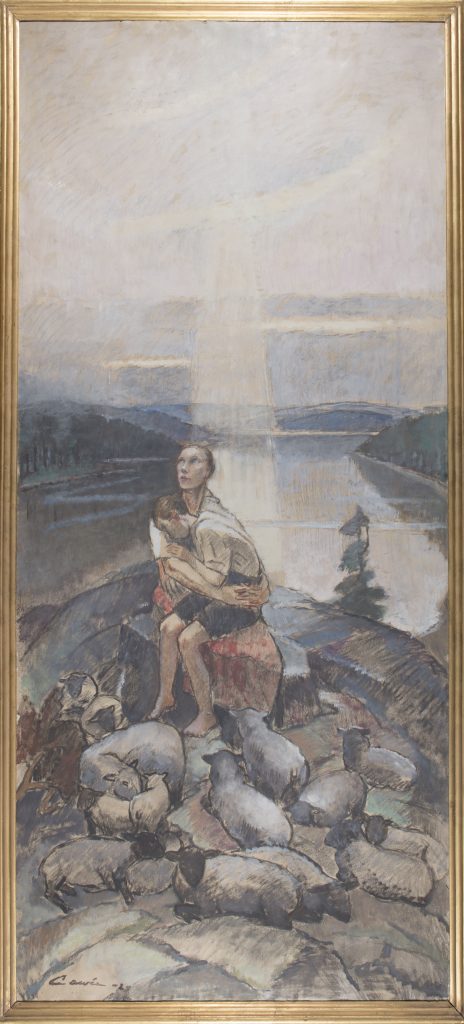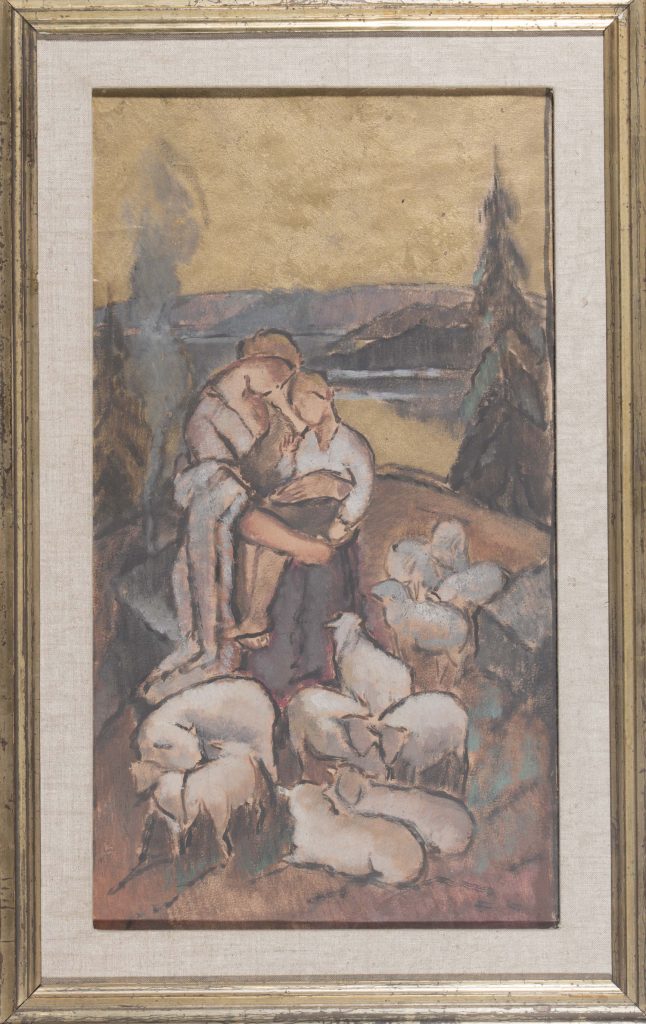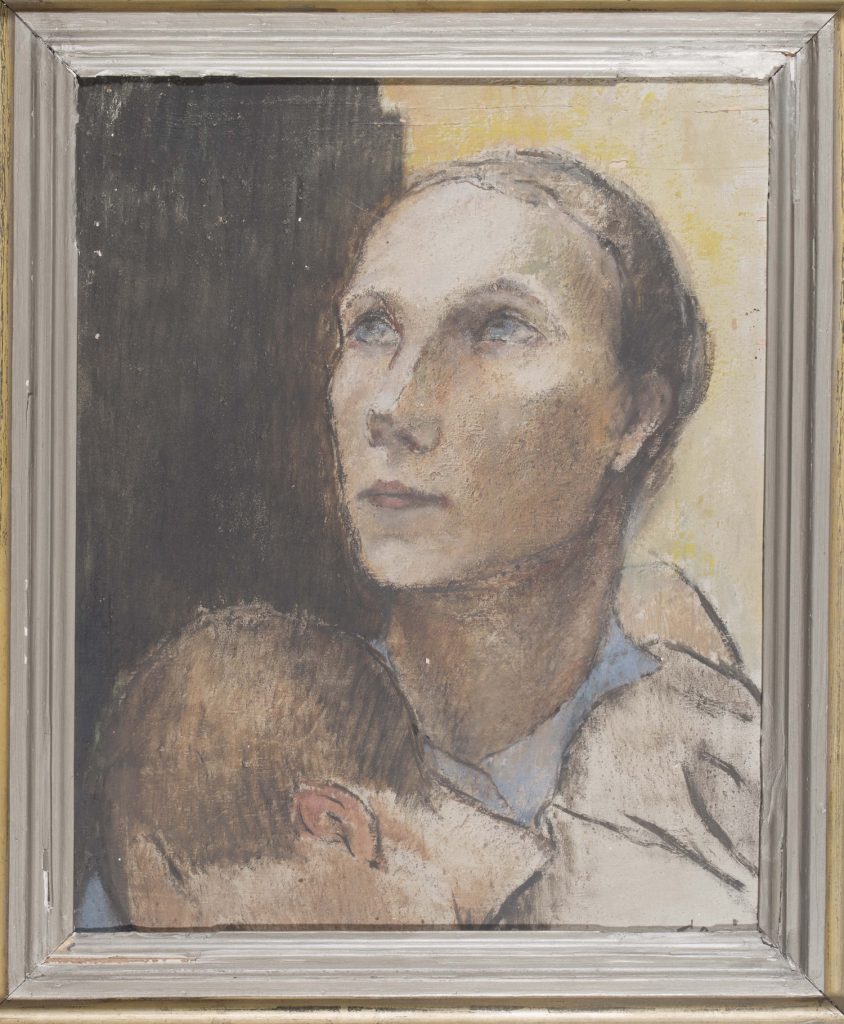Alvar Cavén’s sketches for the altarpiece in Mänttä church
The altarpiece completed in 1928 for the Mänttä church was the first ecclesiastical commission for the artist Alvar Cawén (1886-1935). The work depicts Virgin Mary and the Child in an inland lake landscape from Central Finland. In 2015 Gösta Serlachius Fine Arts Foundation acquired three early sketches for the altarpiece. Two of them depicts a roughly 10 year-old boy instead of the Holy Child.
In the ecclesiastical texts the themes of Mary and the Child are related to Christmas time and the birth of the child Jesus.
Cawén had not previously made any works on commission for the church. So it is possible that he started to work on the commissioned painting as if he had been working on his own and independently chosen the subject matter. The free subject matters often have artist’s personal experience and viewpoint as their starting point.
It is therefore quite probable that the early sketches for the Mänttä church altarpiece depicting a little boy tell about Cawén’s attachment to his own mother. She had passed away only a couple of years earlier. The motif was however not suited for an ecclesiastical painting. This was due to the fact that Christmas, the most important occasion of the church year celebrates specifically the birth of the Child Jesus.
In Mänttä people have always thought that Cawén’s altarpiece has a special quality of being from Mänttä. So that it has a connection to local surroundings and people. The models for Mary and the Child were originally Jämsä-born Tyyne Helin, who became a milkmaid in 1925 at Joenniemi Manor, and her in 1927 born daughter, Sirkka.
The sheep in the painting were grey Finnish sheep. They were the same that the milkmaid Helin had cared for at Joenniemi Manor. Gösta Serlachius had also started to breed them in early 1920s at his farm Syskyjärvi’s Hovi in Ladoga Karelia together with Finnish Sheep Breeders’ Association. The sheep breed in question had black head and legs and a longer tail than the usual. Some texts referring to the altarpiece in Mänttä have misidentified them for Norwegian sheep.
A patron of arts, the mill owner Serlachius was also a died-in-the-wool business man. The sheep depicted in the altar painting were reared and bred for meat and wool production. In the 1920s there was also a demand for their skin, because the Finnish army needed 3000 grey fleeces annually.
There is an impression that the landscape on the background is from Mänttä. People have thought that the artist painted it overlooking Mäntänlahti, Joenniemi, Savosenmäki or Seppälä. The essential feature of the landscape is its expanse and the fact that it has been viewed from a high place.
The view is presumably artist’s own soul landscape and a familiar to him already from his childhood. It is probably a reminiscence of Korpilahti, nowadays Jyväskylä, hence a very similar kind of landscape opens to Päijänne from Oittila, from Iso or Pieni Piikainen, near the artist’s birthplace in Mutanen’s vicarage.
Marjo-Riitta Simpanen
Curator, Art historian




